Introduction
Effective Resource Utilization in the Classroom is critical for fostering an engaging and productive learning environment. Resources, in this context, include both physical materials and human elements like teachers and students. Proper management and innovative use of these resources can significantly enhance the quality of education, facilitate better learning outcomes, and ensure that students are equipped with the necessary skills and knowledge.
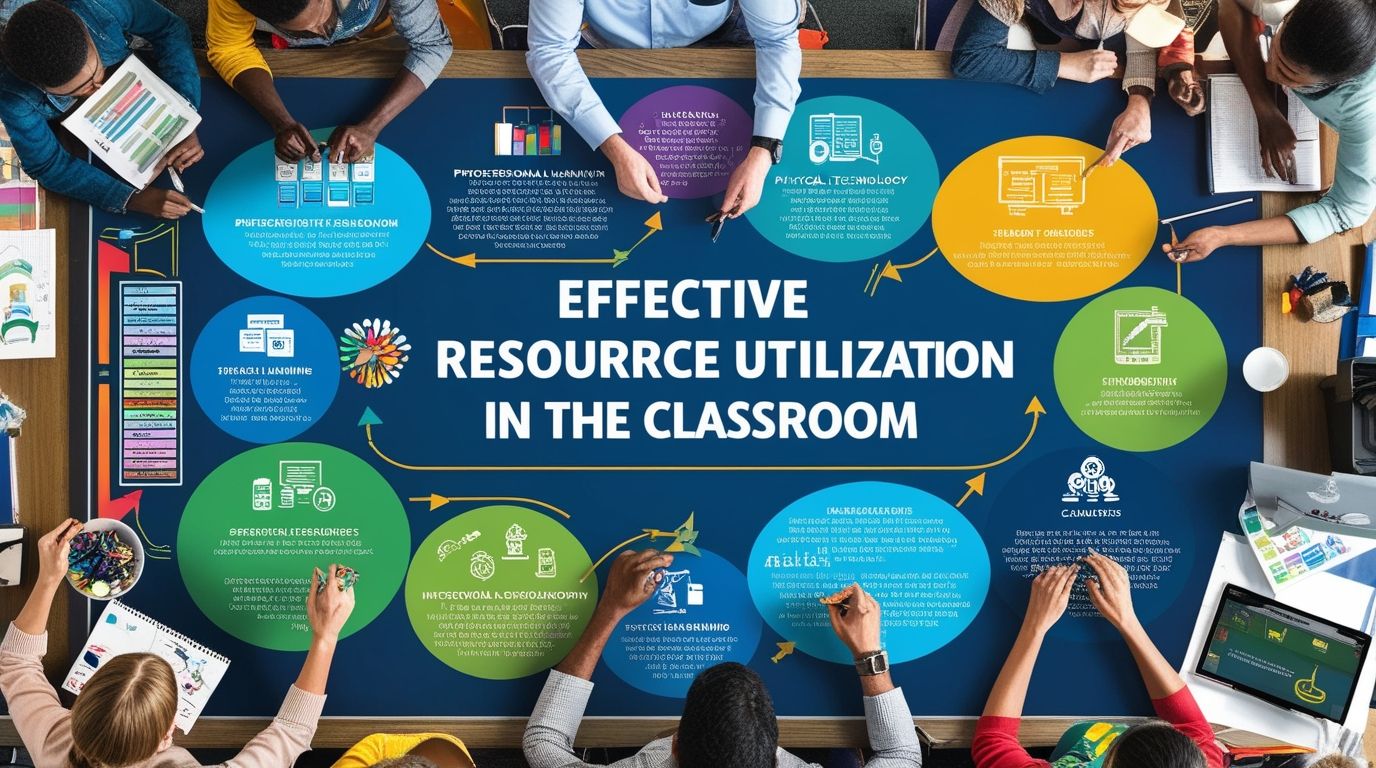
Importance of Effective Resource Utilization
- Enhancing Learning Experiences: Proper use of resources can make learning more interactive and enjoyable. This includes using multimedia tools, hands-on materials, and technology to cater to different learning styles and needs.
- Maximizing Student Engagement: Diverse resources can keep students engaged and motivated. Engaged students are more likely to participate actively and retain information better.
- Supporting Diverse Learning Needs: Classrooms often have students with varied learning abilities and needs. Effective resource utilization ensures that all students, including those with needs, have access to appropriate learning materials and support.
- Improving Teacher Efficiency: When resources are well-organized and readily available, teachers can spend more time on instruction and less on managing materials. This leads to more efficient and effective teaching.
Types of Classroom Resources
- Physical Resources: These include textbooks, stationery, laboratory equipment, and classroom furniture. Effective management of these resources ensures that they are available and in good condition when needed.
- Technological Resources: Technology in the classroom, such as computers, tablets, smartboards, and educational software, can greatly enhance learning. These tools offer interactive and personalized learning experiences.
- Human Resources: Teachers, teaching assistants, and peer tutors are crucial for delivering quality education. Their expertise and interaction with students are invaluable resources.
- Financial Resources: Funding for educational materials, technology, and training programs is essential for maintaining and improving classroom resources.
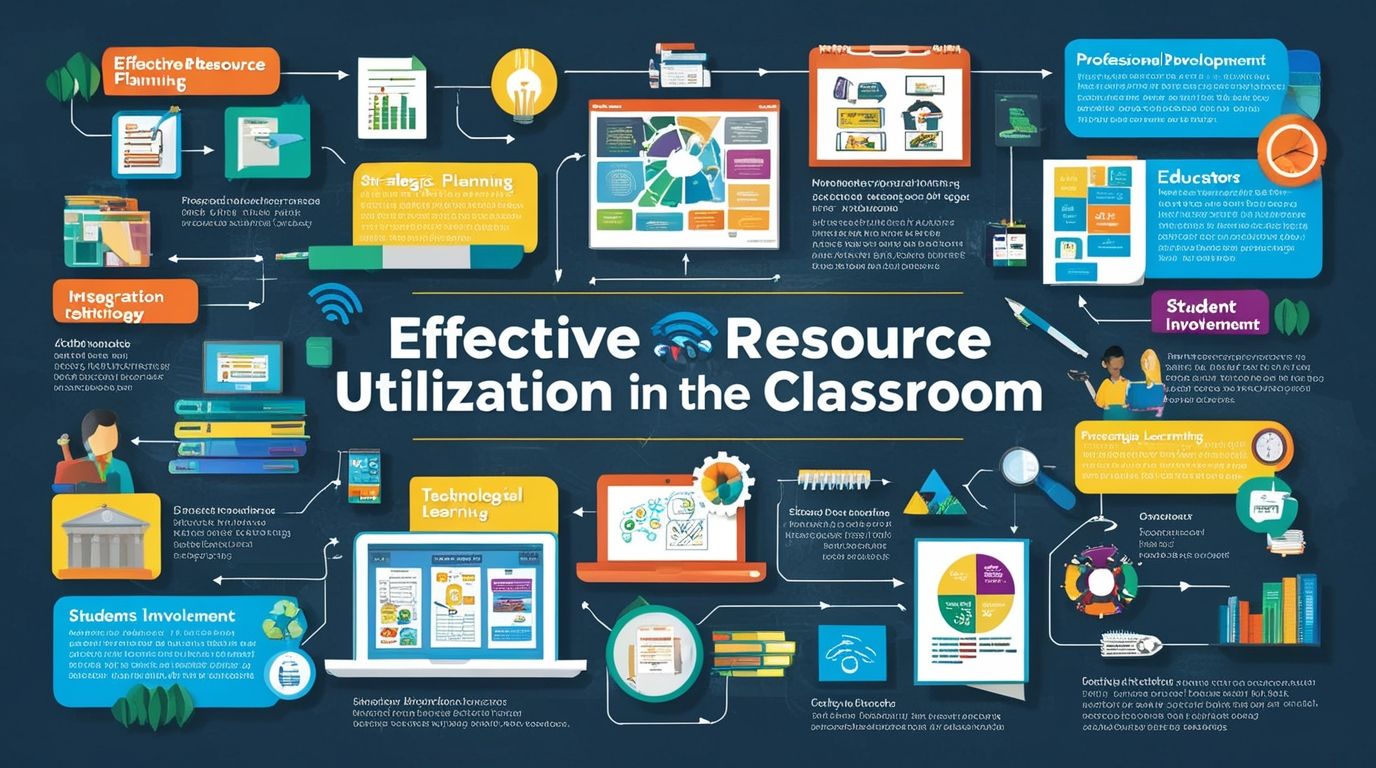
Strategies for Effective Resource Utilization
- Planning and Organization:
- Inventory Management: Keeping an inventory of all physical resources helps in tracking their usage and condition. This ensures timely replenishment and maintenance.
- Lesson Planning: Integrating various resources into lesson plans can make teaching more effective. Planning helps in utilizing available resources optimally and preparing for potential shortages.
- Integrating Technology:
- Digital Classrooms: Incorporating technology like smartboards, projectors, and tablets can make lessons more interactive.
- Online Resources: Utilizing online platforms and resources such as educational videos, e-books, and interactive websites can supplement traditional teaching methods.
- Professional Development:
- Training Programs: Regular training for teachers on the latest educational tools and resources ensures they can effectively integrate these into their teaching.
- Collaborative Learning: Encouraging teachers to share resources and strategies with each other can lead to more innovative and effective teaching methods.
- Student Involvement:
- Peer Learning: Promoting peer tutoring and group work allows students to learn from each other. This not only utilizes the human resources effectively but also enhances collaborative skills.
- Feedback Mechanisms: Implementing feedback systems where students can suggest improvements and new resources can help in better resource management.
- Sustainable Practices:
- Recycling and Reusing: Encouraging the use of recycled materials and reusing resources can help in managing costs and promoting environmental consciousness.
- Energy Conservation: Using energy-efficient devices and practices in the classroom can contribute to sustainable resource utilization.
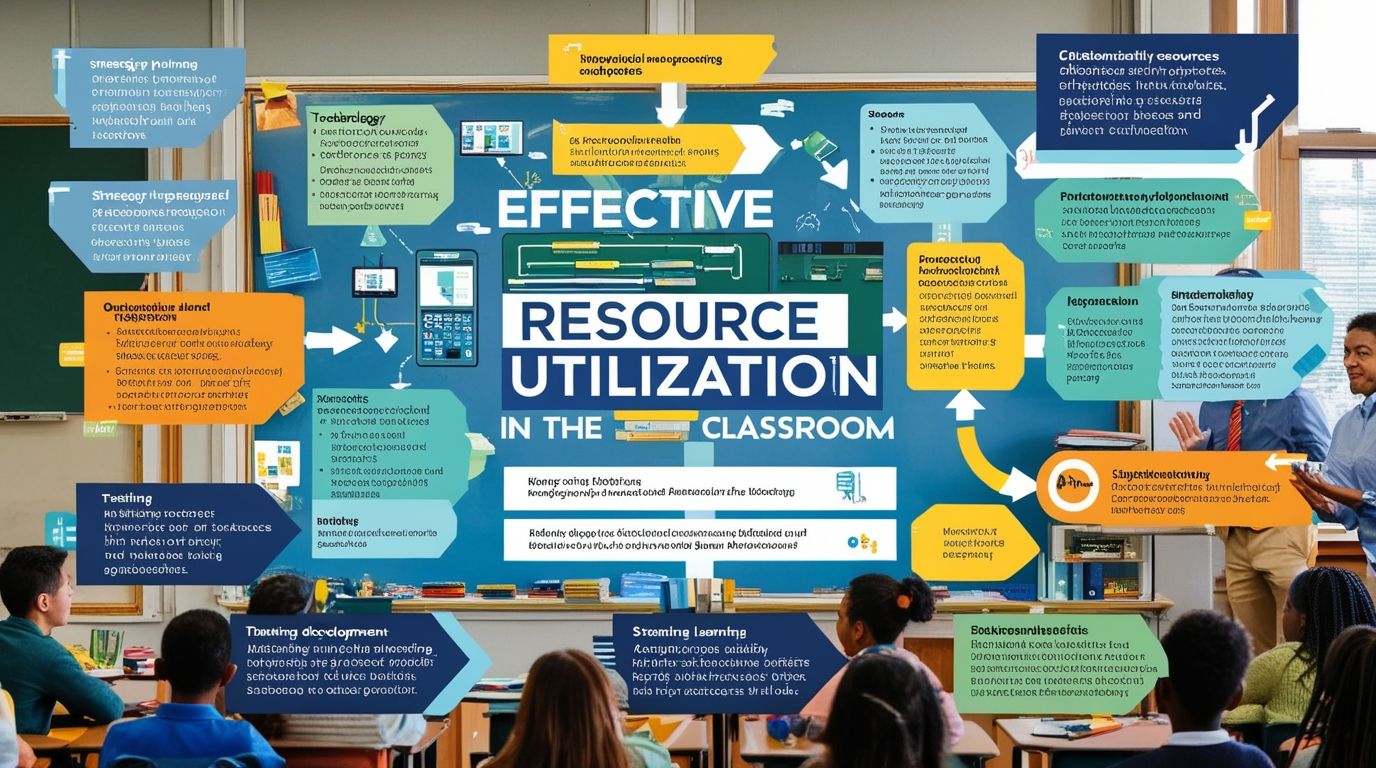
Challenges in Resource Utilization
- Limited Funding: Financial constraints can limit the availability and quality of resources. Schools need to find ways to optimize the use of limited funds, such as seeking grants and partnerships.
- Technological Barriers: Not all schools have access to the latest technology, and even when they do, there can be challenges related to maintenance and training.
- Resource Management: Managing and organizing resources can be time-consuming and requires systematic approaches to ensure they are used effectively.
- Resistance to Change: Teachers and students might be resistant to adopting new resources or methods. Effective training and gradual implementation can help overcome this resistance.
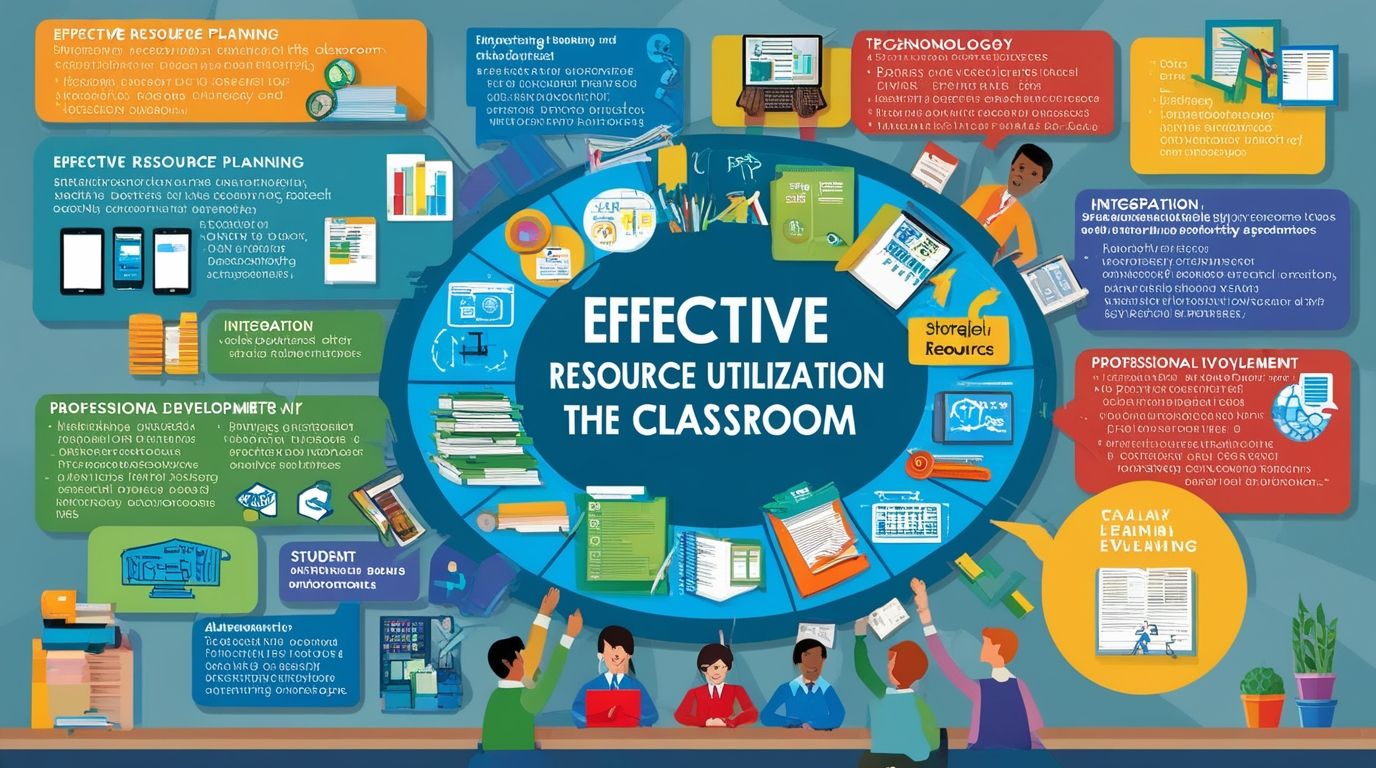
Case Study: A Model for Effective Resource Utilization
School XYZ is an example of how effective resource utilization can transform the learning environment. The school adopted several strategies to maximize its resources:
- Technology Integration: The school invested in smartboards and tablets for classrooms. Teachers were trained on how to integrate these tools into their lessons, resulting in more interactive and engaging classes.
- Collaborative Planning: Teachers worked together to develop a shared inventory system for all physical resources. This collaborative effort ensured that resources were always available and in good condition.
- Student-Centered Approach: The school encouraged peer tutoring and group projects. This not only made learning more engaging but also utilized the human resources (students) effectively.
- Sustainability Initiatives: The school implemented recycling programs and used energy-efficient devices. This not only reduced costs but also taught students the importance of sustainability.
- Community Partnerships: The school partnered with local businesses and organizations to secure additional funding and resources. These partnerships provided students with access to new learning materials and experiences.
Conclusion
Effective resource utilization in the classroom is crucial for providing high-quality education. By planning and organizing resources, integrating technology, fostering professional development, involving students, and adopting sustainable practices, schools can create a more engaging and productive learning environment. Overcoming challenges such as limited funding and resistance to change requires innovative solutions and a collaborative approach. The success of schools like XYZ demonstrates the significant impact that effective resource utilization can have on education.
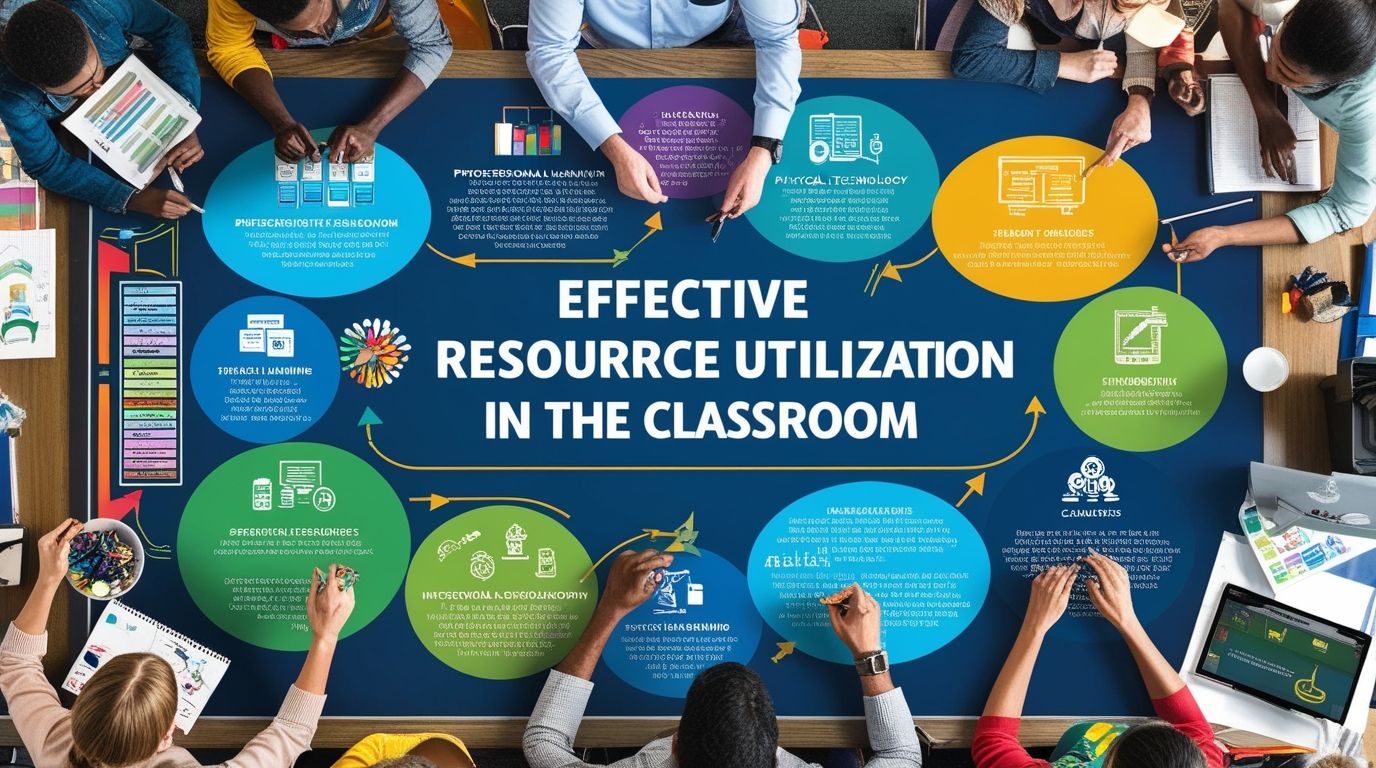
u2rv1z
you’re in reality a excellent webmaster. The web site loading pace is amazing. It kind of feels that you’re doing any distinctive trick. Moreover, The contents are masterpiece. you have performed a wonderful job on this subject!
Rediscover your CD collection with this top-rated clock radio and CD player combo. Ideal for bedrooms, offices, or kitchens, it plays your favorite CDs while also offering a reliable alarm clock radio function. Dual alarms let you set separate wake-up times, and the clear digital display is easy to read day or night. With its stereo radio alarm clock capabilities and optional remote control, this CD alarm clock radio ensures comfort, convenience, and crisp audio in one stylish package. A top choice for those wanting the best CD alarm clock for sound and function.
Hello, i think that i saw you visited my weblog so i came to “return the
favor”.I am attempting to find things to
improve my website!I suppose its ok to use a few of your ideas!!
Here is my site nordvpn coupons inspiresensation (http://t.co/5gaT0Nh9CJ)
Good info. Lucky me I reach on your website by accident, I bookmarked it.
I will immediately seize your rss as I can’t find your e-mail subscription hyperlink or e-newsletter service. Do you’ve any? Please let me realize in order that I may subscribe. Thanks.
I was reading some of your blog posts on this site and I think this website is really instructive! Retain putting up.
I reckon something really interesting about your website so I saved to favorites.
Hi, just required you to know I he added your site to my Google bookmarks due to your layout. But seriously, I believe your internet site has 1 in the freshest theme I??ve came across. It extremely helps make reading your blog significantly easier.
Greetings! I know this is kinda off topic but I was wondering if you knew where I could get a captcha plugin for my comment form? I’m using the same blog platform as yours and I’m having difficulty finding one? Thanks a lot!
Loving the information on this internet site, you have done great job on the blog posts.
It’s perfect time to make some plans for the future and it is time to be happy. I have read this post and if I could I wish to suggest you some interesting things or tips. Maybe you could write next articles referring to this article. I wish to read even more things about it!
Hi there! This post couldn’t be written any better! Reading through this post reminds me of my previous room mate! He always kept talking about this. I will forward this article to him. Pretty sure he will have a good read. Thank you for sharing!
Thank you for any other informative website. The place else may I get that type of information written in such an ideal manner? I have a undertaking that I’m simply now working on, and I have been at the glance out for such info.
I really like your blog.. very nice colors & theme. Did you make this website yourself or did you hire someone to do it for you? Plz respond as I’m looking to design my own blog and would like to know where u got this from. cheers
Some really prize blog posts on this website , saved to my bookmarks.
You have noted very interesting details! ps nice site. “Enemies, as well as lovers, come to resemble each other over a period of time.” by Sydney Harris.
Very well written story. It will be supportive to everyone who usess it, including me. Keep up the good work – looking forward to more posts.
**revitag**
revitag is a daily skin-support formula created to promote a healthy complexion and visibly diminish the appearance of skin tags.
**neuro genica**
neuro genica is a dietary supplement formulated to support nerve health and ease discomfort associated with neuropathy.
**sleep lean**
sleeplean is a US-trusted, naturally focused nighttime support formula that helps your body burn fat while you rest.
**memorylift**
memorylift is an innovative dietary formula designed to naturally nurture brain wellness and sharpen cognitive performance.
Appreciate it for helping out, good information.
turkey couple tour packages Our guide gave us plenty of time for photos. https://telesup.org/discover-the-beauty-of-istanbul-with-a-bosphorus-tour/
I wasn’t sure what to expect at first, but this turned out to be surprisingly useful. Thanks for taking the time to put this together.
This is exactly the kind of content I’ve been searching for.